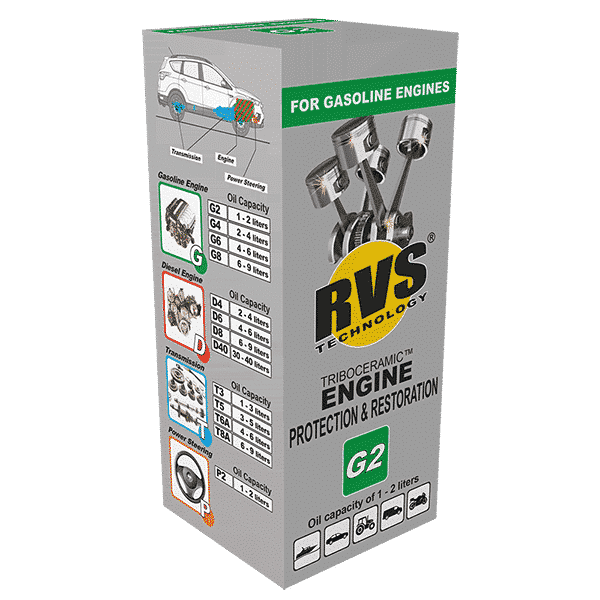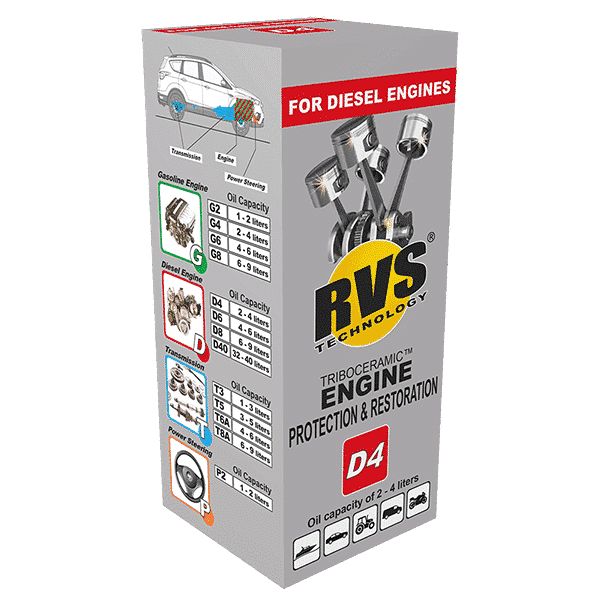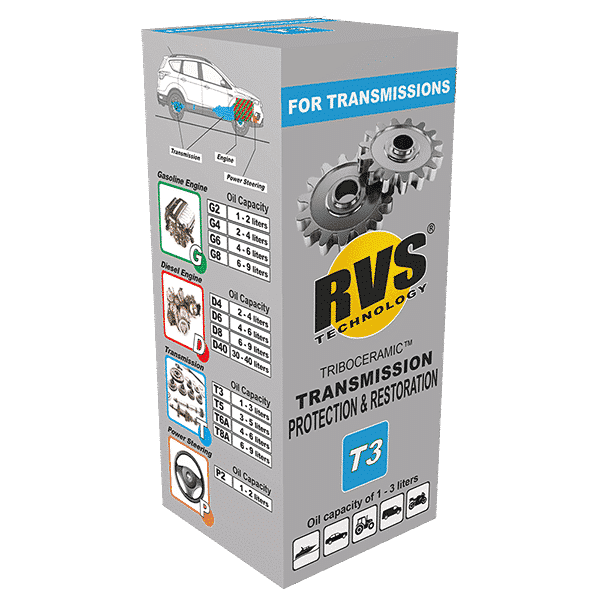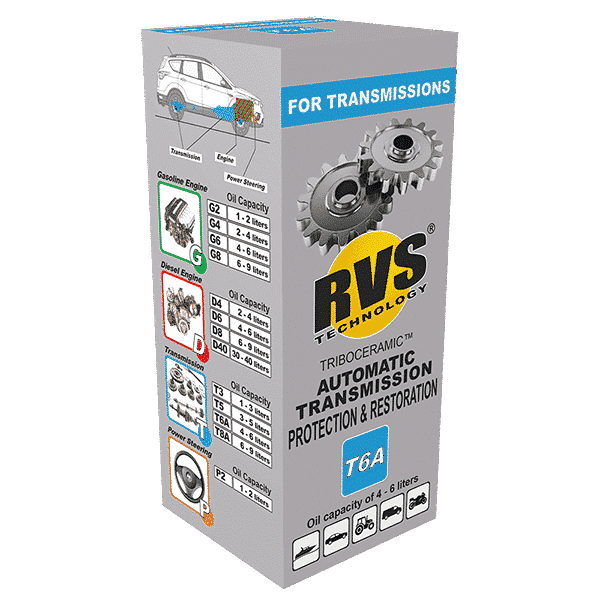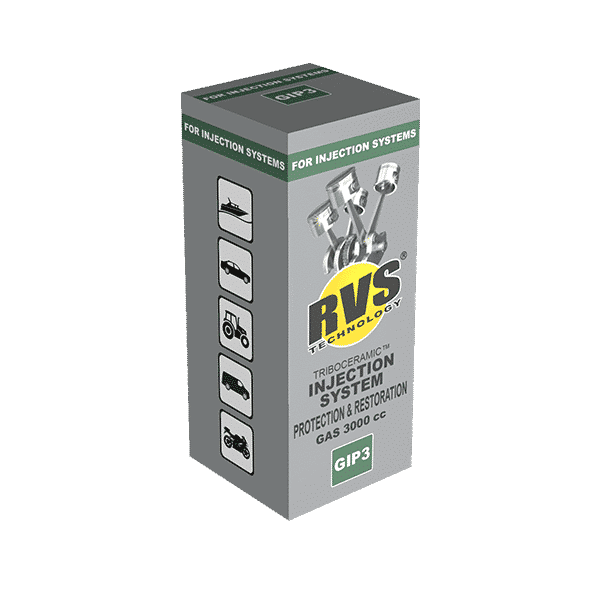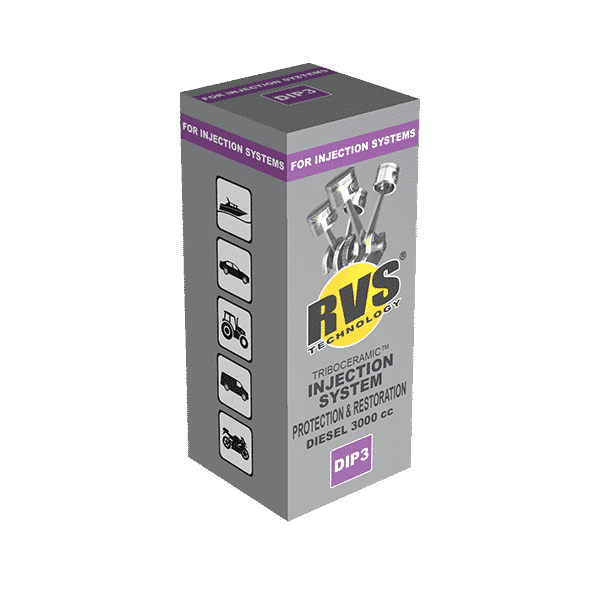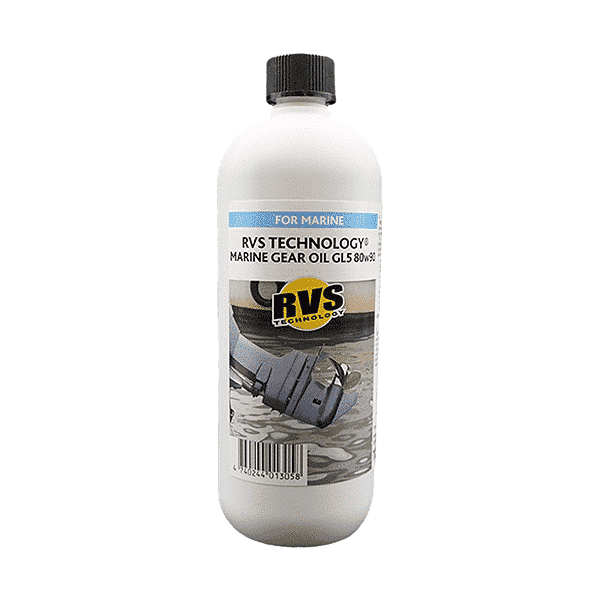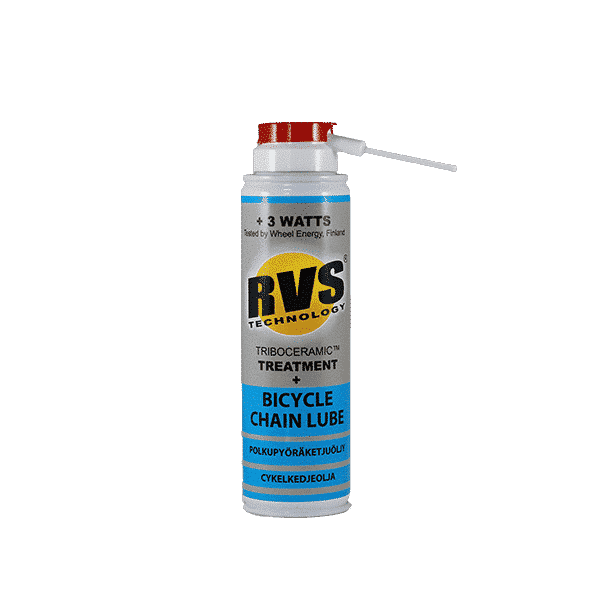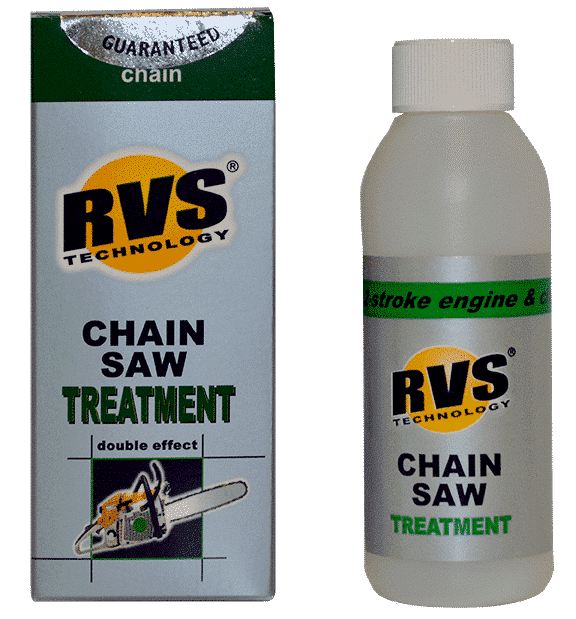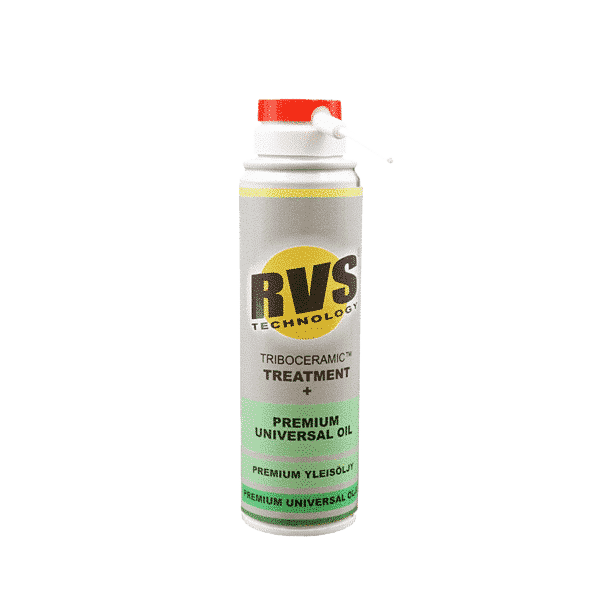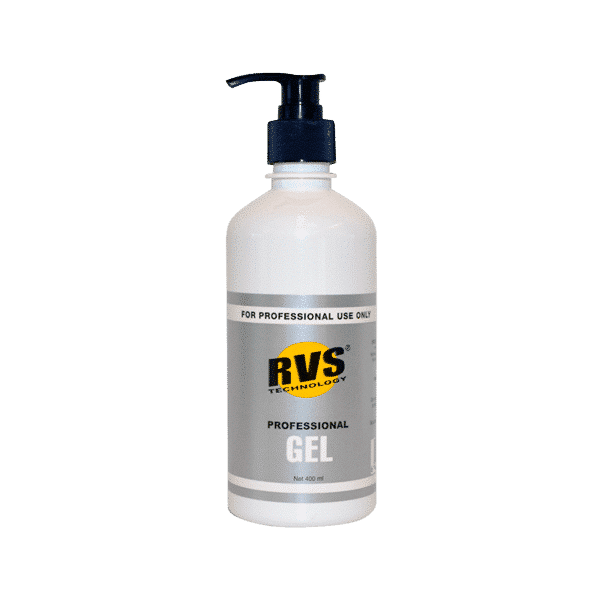The Innovative
RVS Technology®
Durability. Power. Protection. Lower fuel consumption and emissions. Restoring worn mechanisms. An easy-to-make ceramic surface inside your equipment.
Buy now What is RVS?RVS is your partner at reliable and sustainable motoring, boating, motor sports and industrial processes. When you choose an RVS treatment, you get plenty of benefits: fuel consumption and emissions reduce by 5-to-10 percent, engine power increases by 3-to-15 percent, and the life of your equipment increases by up to 50 percent.
-
RVS is not an engine oil or additive, but an innovative way of forming a new surface based on ceramic processing. An RVS treatment does not affect the properties of the oil it is poured into. That is why it lasts for approximately 100,000 kilometres (65,000 miles) in cars that are used in normal road conditions.
-
RVS is the only technology that has the capability to restore surfaces prone to friction up to their original shape. The core of RVS Technology® is in nanotechnology that can identify worn and damaged zones as well as zones that are subjected to wear damage, and form a new ceramic, higly protective and durable surface in these zones. The protective layer reduces friction and wear in engines, transmissions, power steering units, bearings etc., which increases the lifetime of your equipment and improves its performance.
-
RVS Technology® has been widely tested and proved to be an effective technology in international tests. Among others, TÜV SÜD, the renowned German testing organisation, has certified the benefits of RVS in its own tests.
-
The innovative RVS Technology® products are produced in Finland with over 20 years of experience.

High quality of RVS
All productsThe vibration in my ’02 FJR1300 disappeared after a dual treatment of the rear and engine.
Now I have ridden 40 thousand kilometres without vibrations.
Arto Kota-aho,
Mäntsälä, Finland, 06/2022
Easy to use, and the effect can be felt.
In a 10-year-old Beamer, fuel consumption fell by almost 1 litre per 100 km. The dual treatment was carried out in accordance with the instructions and with an oil change.
Petri Nurkka-Tuorila, Espoo, Finland, 06/2022
Excellent experience in plenty of cars and a motorcycle.
I have treated diesel and petrol engines, transmissions, power steering units, and fuel systems. Here are some of my notions after the treatments: softer and quieter running sound, better functioning transmission, easier switching, and lower fuel consumption.
Manu Lehtinen, Nokia, Finland, 05/2023
What our customers say about RVS
Customer feedbackDo it easily and quickly
You get the best possible result if you treat your vehicle engine with RVS twice. Using any separate engine flushing product is not necessary before either RVS treatment unless you intend to use them for a specific reason.
When treating new oengines with a mileage of less than 40,000 kms (25,000 miles) that are used in normal road conditions, just one treatment is normally sufficient. You can perform it at practically any stage of the oil change interval as far as you have at least 500 kms (350 miles) ahead before the following oil change. The RVS substance added to the oil circulation may be left there until you drain the oil during the next planned oil change.
In case of engines with higher mileages, we recommend you start the first RVS treatment around 300–400 kms (200–250 miles) before the oil change. If the oil has already been changed and you hesitate with the timing and required product, contact our customer support. We are glad to guide you to perform the treatment procedures properly!
The second treatment is carried out right after the oil has been changed, and the oil is left in the engine for a normal oil change interval.

RVS is a sustainable choice with a durable effect
The RVS treatment is an environmentally sustainable choice. When the engine undergoes RVS treatment, its internal components are effectively cleaned at the same time. Not only do emissions decrease by 5–25% as a result of RVS treatment, but the fuel also burns in the engine more cleanly, optimising its performance and reducing the formation of harmful residues.
Due to the cleaner combustion, overall emissions decrease more than what could be expected based solely on a reduction in fuel consumption.
Contact us
If you wish to ask us about our products, you can contact us by using the form below.
"*" indicates required fields

